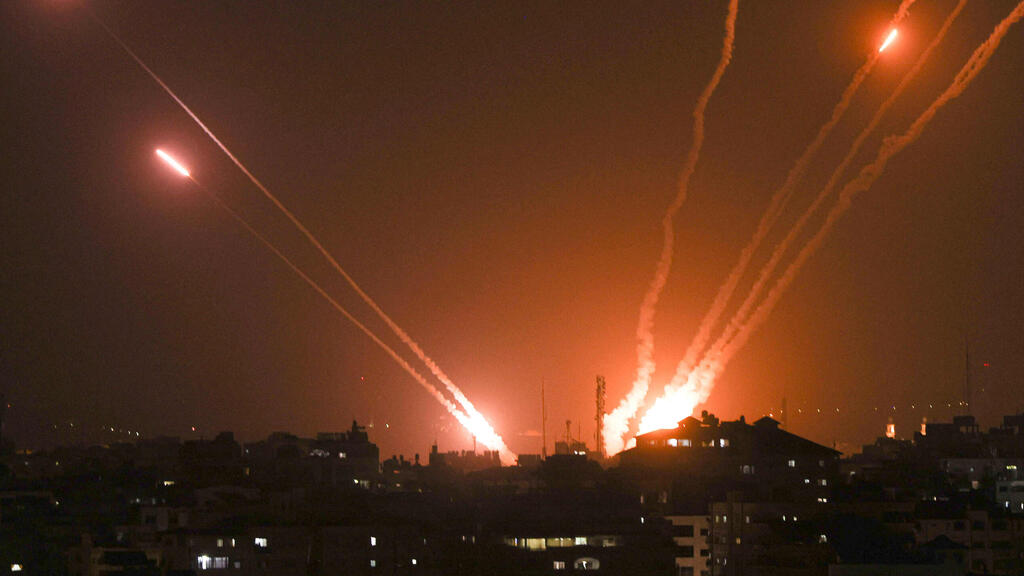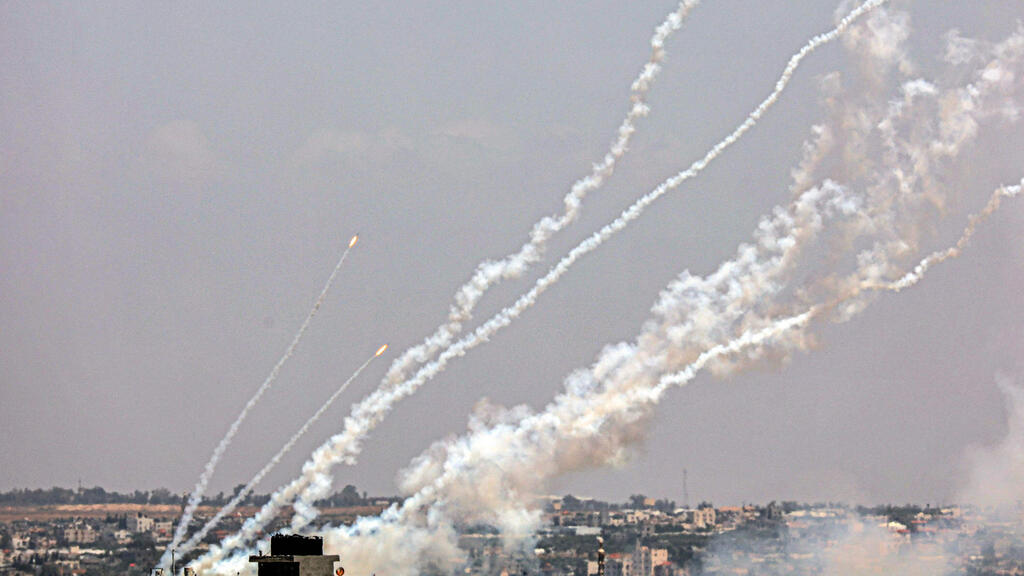A citizen of the Soviet Union was once asked, according to a one-time popular joke, how was it to live under Communism. “we pretend to work and they pretend to pay us,” he answered.
Read More
The conflict between Israel and the Palestinian terrorist organizations in Gaza is increasingly reminiscent of such theatrics. These murderous groups pretend to emerge triumphant from every round of fighting and boast that their “resistance” is heralding the demise of the “occupation” and of Israel itself.
On the other end, Israel pretends that each time it retaliates forcefully, its operation made a measurable dent in these organizations’ readiness and ability to pursue ad nauseam their chimera.
During Operation Shield and Arrow, there was an added twist to this game of make-believe. Israel pretended Hamas, the bigger terrorist organization and the ruler of Gaza was not involved in the fighting although it knew full well that it was part of the action through the “resistance” front’s “joint operations room” and authorized the Palestinian Islamic Jihad’s (PIJ) fire. In reality, Israel had acquiesced to Hamas’ strategy of operating against it through Gaza’s smaller organizations (and via its operatives in the West Bank) without paying a price.
Hamas, while staying out of the fray, acted as if it was taking part in the “struggle,“ primarily by issuing threatening statements against Israel and in support of the “heroism” of their Palestinian brethren.
For Palestinian terrorists to peddle this charade of laying waste to Israel is not surprising. Besides cultural and societal roots, such outlandish claims are their raison d’etre and a sine qua non for elevating their standing in the Palestinian street, luring new recruits, and keeping the support of terrorist masters like Iran.
Thus, Ziad Nakhla, the Secretary-General of the PIJ, (who hides out in Hezbollah's Dahiya neighborhood of Beirut) rushed to thank his puppeteers in Tehran for their backing and called their attention to images of “Zionist evil-doers hiding in fear” of his organization’s rockets on their way to Israeli cities.
Israel’s motives for engaging in self-deception are increasingly evident as well. It appears that while the country’s security establishment had long ago concluded that the Gaza problem will only be resolved by militarily retaking the Strip — an ill-advised and potentially costly proposition — inaction is not an option given the public outcry following every attack and the growing conviction that “ things cannot go on like this.” The “solution“ is the limited IDF offensives coupled with the government’s assurances that this time Gaza’s terrorists learned their lesson.
Consider the following: At a cabinet meeting on May 14, the morning after a cease-fire went into effect, Prime Minister Benjamin Netanyahu said “We bolstered (Israel’s) deterrence“ as a result of the “perfect” execution of Operation Shield and Arrow.
However the very next day Netanyahu toured the southern city of Ashkelon, which was heavily targeted during the fighting, and promised its residents funds to build safe rooms and shelters so they can successfully withstand future rocket attacks from Gaza.
Needless to say, such actions indicate tacitly that the Prime Minister himself has little confidence that Israel’s “bolstered” deterrence will dissuade Gaza terrorists and is in fact preparing for more rocket attacks on Israeli cities.
It is a dictum of the strategic theory that protecting a population undermines the credibility of a threat to respond with overwhelming force if one’s cities are attacked. Indeed such a debate was raging in Israel during the tense months leading up to the first Gulf War in 1991. At issue was the distribution of gas masks to the population. Some argued such a move may actually make chemical weapons attack more likely, as the Iraqi leader Saddam Hussein may interpret it to mean Israel had opted for a defensive posture and doubted the credibility of Prime Minister Yitzhak Shamir’s vow to exact a “terrible and a horrible price” if Iraq attacked Israel.
6 View gallery
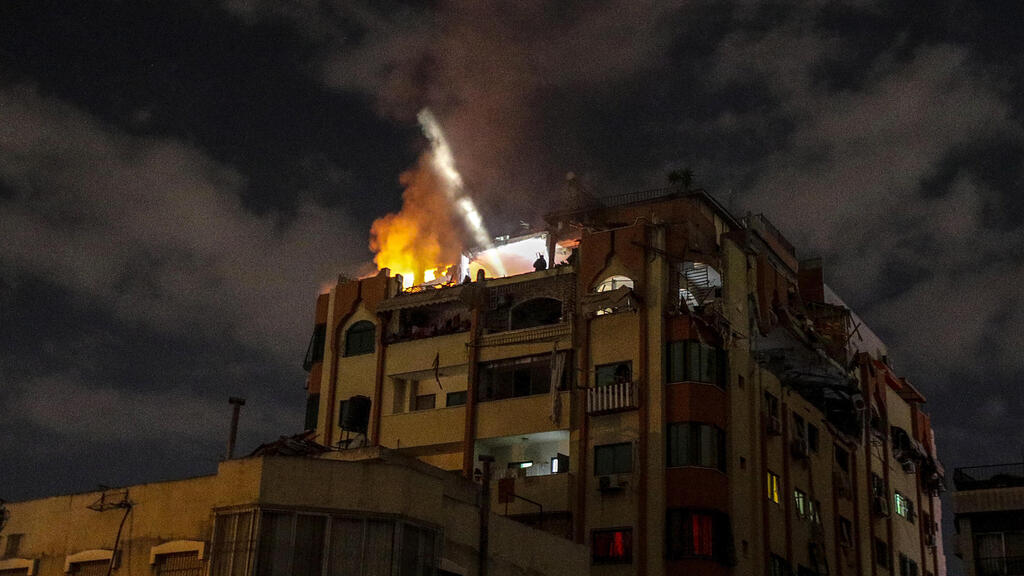

Top floor of a Gaza apartment building hit in targeted killing of PIJ commanders
(Photo: EPA)
The Failure of Israeli Deterrence
Israeli leaders, including Netanyahu, were unquestionably correct in taking measures to harden the Israeli population against air, rocket, and missile attacks. In the Middle East relying solely on deterrence will be foolhardy. For example, there is ample evidence that Gaza terrorists are undeterrable.
Israel launched a preemptive attack – Operation Breaking Dawn— on August 5, 2022. During the ensuing 56 hours of fighting, the PIJ fired 1200 rockets toward Israel apparently seeking to saturate Israel’s missile defenses. However, according to Tor Wennesland, the United Nations Special Coordinator for the Middle East Peace Process, "some 20 percent" —240 rockets—fell within the borders of the Gaza strip. Of the remaining 960 rockets that crossed into Israel, 610 landed harmlessly in the sea or in open areas. The Iron Dome missile defense system intercepted 96%, or 336 of the remaining 350 rockets that were heading toward Israeli cities. The remaining 14 caused no serious Israeli casualties.
Yet in Gaza itself, a very different story emerged. According to the IDF, more civilians in Gaza were killed by malfunctioning PIJ rockets than by Israeli airstrikes. It estimated that 51 people were killed in Gaza, 24 of them PIJ militants. (The latter admitted to 12 killed). Accordingly, of the 27 Gazan civilians who died, 16 were killed by PIJ rockets that fell within the Strip including 12 of the 15 children who died.
Israel said it killed “the entire senior security echelon of PIJ’s military wing in Gaza.” Nevertheless, the PIJ’s Nakhla called the results of the fighting “a historic achievement.”
Little wonder that in May 2023, barely ten months after Operation Breaking Dawn, the PIJ attacked again. The organization sought to punish Israel for the death of one of its senior members Khader Adnan who died in an Israeli prison while on a hunger strike.
IDF’s spokesman Lt. Col. Richard Hecht said 104 rockets were fired in total. Eleven fell into the sea, 14 landed inside Gaza, 24 were intercepted by Israel's air defense system, and 48 fell in open areas, he added. At least one rocket hit a building site in the southern Israeli city of Sderot. A 25-year-old Chinese worker was moderately injured by shrapnel and two other foreign workers were lightly injured.
The attack led directly to Operation Shield and Arrow later the same month, which resulted, among other losses, in the killing of 6 top PIJ commanders.
6 View gallery
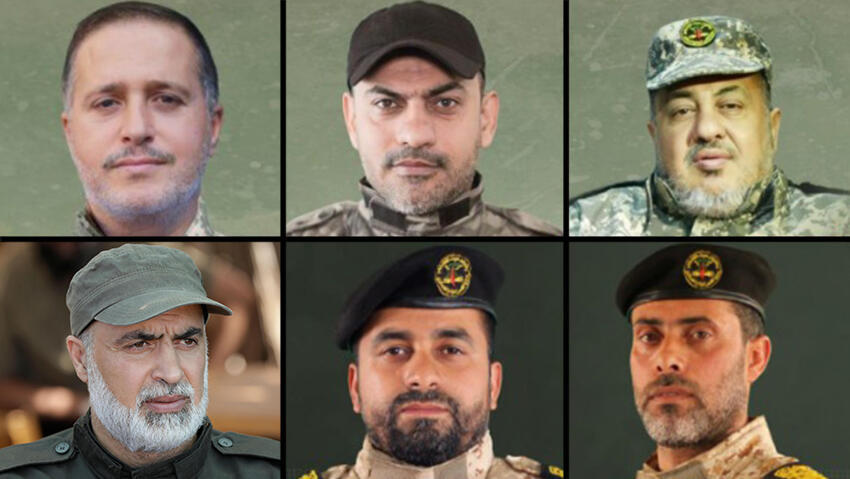

PIJ commanders dead in targeted killing during Israel's Operation Shield and Arrow
(Photo: AP, IDF Spokesperson's Unit)
But the PIJ was still unswayed, clinging to the phantasm of bombarding Israel to a pulp and hyping the images of Israelis cowering in fear in their cities. For example, after the cease-fire was announced on May 8, the PIJ fired a volley of 35 rockets of which, based on their performance in the preceding 5 days, 25% failed. That left 26 which crossed into Israel. Of these, 60% — 15 rockets — fell harmlessly in open areas (based on the rockets’ performance rates throughout the fighting). According to the IDF, 11 were intercepted by the Iron Dome missile defense system. Thus, none of the rockets fired in the last salvo reached its target.
The PIJ’s final barrage was highly anticipated by the IDF. Despite this, the organization opted to engage in a final round of self-delusion. Moreover, it was fully aware that its ineffective fire invites harsh retaliation. As IDF’s Chief of Staff, Lt. Gen. Herzi Halevi said - the PIJ’s continued rocket attacks enable the military to “entrench” the achievements of the operation.
6 View gallery
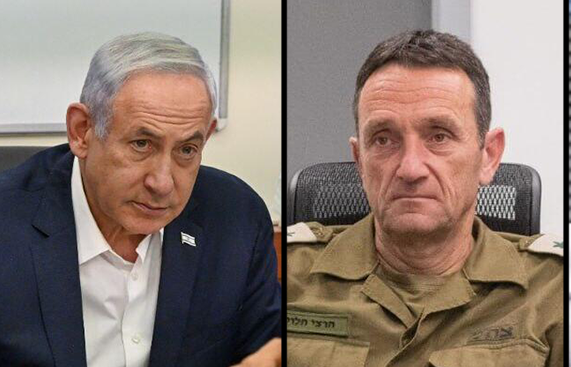

Prime Minister Benjamin Netanyahu, IDF Chief of Staff Herzi Halevi
(Photo: Kobe Gideon, GPO, IDF Spokesperson's Unit)
The above timeline provides unmistakable evidence of the failure of Israeli deterrence. In fact, Israel has carried out no fewer than 15 military operations in the Gaza Strip since disengaging from it in 2005. As Amos Harel, the defense analyst of the Israeli paper Ha’aretz wrote on May 12, “If the [IDF’s] operations were really all that successful, we wouldn’t need them once a year on average, with the time between them becoming shorter in the past few years.”
It can be thus concluded, that Gaza rocket terrorism against Israel is a form of suicide bombing which is generally recognized as undeterrable. Yet unlike rocket attacks, suicide bombers are often much more lethal. Hence the PIJ attacks are rather surreal if not farcical in nature—while the demise of their main schemers (at the hands of the IDF) is increasingly certain and the consequences of their (involuntary) martyrdom negligible deterring them are still unattainable or so it may seem.
Quiet-for-Quiet or the Campaign between the Wars
The grim history of incessant rounds of inconclusive fighting and the general expectation that this pattern will continue on end has led some in Israel to suggest there was no military solution to Gaza. Instead, it is argued, bettering the lives of Gazans through helping the development of the local economy will lessen the probability of new attacks as Gaza residents, especially the elite, will “ have something to lose.”
However, this solution fails to address Hamas’ current strategy. As the ruler of Gaza, the organization has been the beneficiary of economic “payoffs” both directly — in the form of Qatari cash funneled into the strip — and indirectly —through Israel easing restrictions and allowing some 20,000 Palestinians to work in adjacent Israeli communities. While these stimulants have apparently bought Hamas holding its fire, the organization is circumventing the “understandings” by encouraging the lesser terrorist groups to intensify their “armed resistance,” including by firing rockets into Israel, and by scheming to shift the fighting away from the Strip — it is working hard to open a new front in the West Bank.
Hamas’ answer to the “solution” of providing a cake to entice quiet is to have the cake and eat it too.
Besides, this approach was already tried. One of the main arguments in support of Israel’s 2005 withdrawal from the enclave was that letting the Palestinian rule themselves will lessen motives to attack Israel for fear the Strip will be reconquered.
We are thus left with the prevailing opinion in the Israeli security establishment that given the limited damage caused by Gaza rocket terrorism and the absence of a realistic (i.e. low- cost) military solution, the best Israel can do is “manage” the conflict or, in military parlance, adopt the doctrine of “mowing the lawn.” Like a lawn that requires care time, so would the IDF have to launch repeated military operations to “cut back to size” the Gaza terrorist organizations whenever they had “overgrown” their tentacles. The IDF will not attempt to destroy them.
It is increasingly doubtful, however, that “managing” the Gaza problem is a sustainable solution. While woefully ineffective, rocket terrorism has had a measurable negative impact on the Israeli economy, it traumatized many Israelis, especially children with possible long-lasting psychological scars. From a strategic perspective, the tit-for-tat rounds portray the IDF as a paper tiger who, despite its putative vast powers, is unable to eliminate minor threats. This has progressively eroded the military’s deterrent posture. Most importantly, the Israeli public is clearly signaling it is fed up with being “cannon fodder” so to speak.
6 View gallery
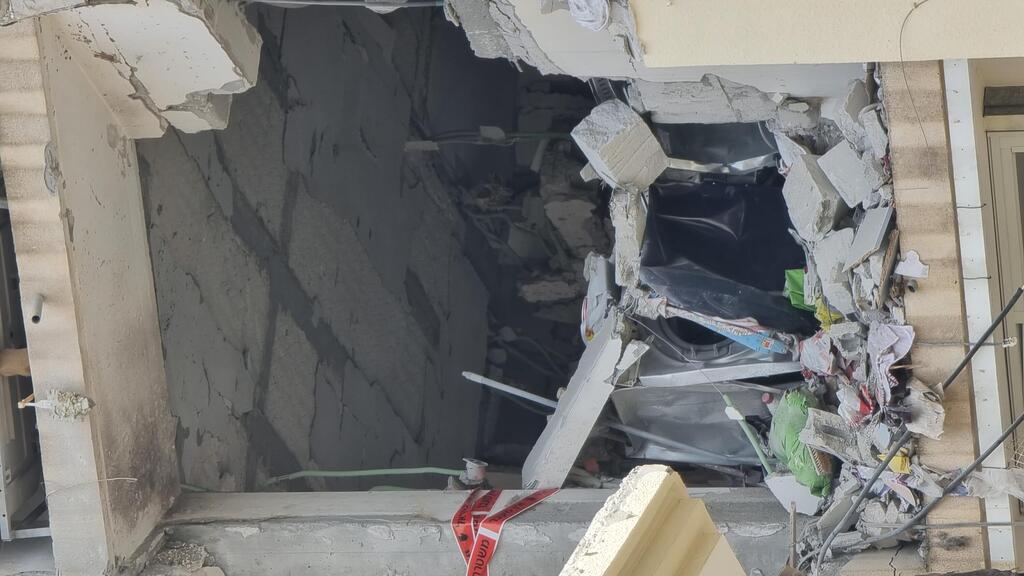

An apartment takes direct hit from Gaza rocket in Rehovot on Thursday
(Photo: Shmulik Davidpur)
Curiously on other fronts facing the country, Israel abandoned the model of conflict management in favor of an activist policy. In both Syria and the West Bank, the IDF launched the “campaign between the wars.” The latter comprises frequent, often daily, military operations designed to preempt any emerging threat. Yoav Gallant, Israel’s new Defense Minister even revealed that since assuming his post he had “doubled the attacks on Iran [ian targets] in Syria.” Of course, this approach indicates that Israel opted not to rely on deterrence alone to secure its borders.
Indeed Netanyahu said that in authorizing Operation Shield and Arrow he instructed the IDF command to exercise “ surprise and initiative.” In doing so he was in effect getting as close as ever to applying the “campaign between the wars” model to the Gaza front.
Yet in agreeing on May 13 to a cease-fire, Israel posited that “quiet will be answered with quiet.” Such a policy goes directly against the “campaign between the wars” doctrine and undermines Netanyahu’s assertion that in the wake of the operation Israel “changed the equation” with the Gaza terrorists.
“Quiet-for-quiet” policy signals to the PIJ that Israel will only react to, rather than initiate violence. The PIJ’s efforts to build its arsenal, dig tunnels, and train its terrorist would not be preempted as long as it refrains from launching hostilities.
By comparison, under a “campaign between the wars” doctrine manufacturing ’facilities, offensive tunnels, and training bases will be attacked upon discovery and key perpetrators eliminated preemptively, not just after Gaza terrorists begin firing at Israeli cities.
As long as reoccupying the Strip is off the table, launching a campaign between the wars there may provide the best prospect for suppressing the Gaza terror threat. By comparison, sticking instead with a policy of managing the conflict would mean the persistence of the familiar pretend game. Israeli citizens will continue to pay the price and so will the IDF’s deterrent image.
Dr. Avigdor Haselkorn is a strategic analyst and the author of books, articles, and op-eds on national security affairs.


